In the service of archaeology
Exhibition concept: Aleksandra Bugar, Boris Mašić
Visual design of the exhibition, poster, catalogue and promotional materials: Iva Marochini, Adriana Čulek
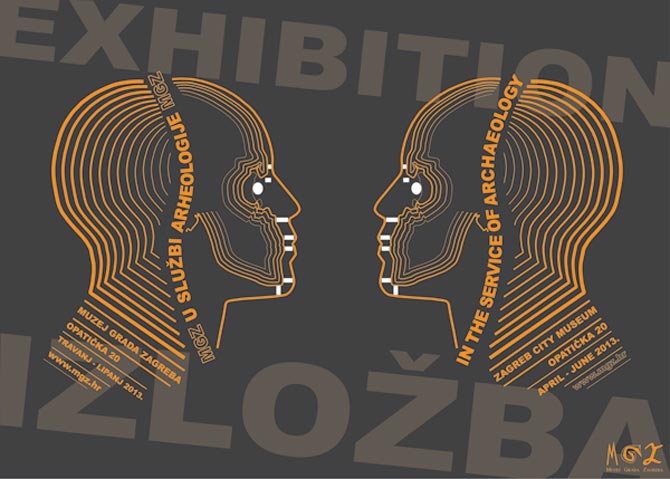
In our frequent conversations, during and after the excavations, we would go over various proposals concerning the interpretation of some of the finds, discuss our various quandaries, raise numbers of questions… The causes of some of these lay in the results of the analyses, radiocarbon analyses, for example, which threw light on certain dilemmas or else confirmed hypotheses that had been erected, but would also result in series of new conclusions. Some finds, such as metallurgical waste, required the engagement of experts so as to ascertain the composition of a sample, on the basis of which the whole find would then be interpreted as a by-product of the smelting of iron at the site we were excavating. The poor state of preservation of the carved inscription on a milestone from Ježdovec entailed the need for finding the most suitable way for reading it. A way out was found in the engagement of experts who used the same kind of instruments and methods that we can see in the CSI series. The anthropological analyses standardly used in archaeology were carried out on numerous human remains. A forensic method for facial reconstruction allowed us really to see the face of a female inhabitant of Gradec whose mortal remains had been assigned to the 13th century by radiocarbon dating.
All the results of the analyses presented at the exhibition have been selected because they were crucial in the interpretation of the finds from the archaeological sites that Zagreb City Museum has excavated in the last ten years and more. Along the lines of contemporary museological practice, our objective was to use the exhibits selected to present the methods of the other disciplines that had been employed, putting them in the foreground and using the archaeological find as if it were a footnote to them. The objective is to show the general public that an interdisciplinary approach provides much more information, from which we can more exactly elaborate what sometimes seem only dry-as-dust archaeological finds. Displaying the archaeological find in the context of the results of interdisciplinary research is intended to acquaint the public with the powerful dynamics of the changes through which archaeology has passed during the past several decades, as well as to draw attention to the need to master contemporary methods and technologies that enable our understandings to become more comprehensive. At the same time, we tried to embody the process of the upgrading of knowledge, with the help of which an object extracted from its primary context takes on an additional museal value. For example, the carbonised seeds from an ancient cremation grave became a reflection of the funeral rites, as well as of the food, the environment and the economy of the age.
ZAGREB CITY MUSEUM IN THE SERVICE OF ARCHAEOLOGY
The first traces of archaeological activity in Zagreb City Museum were recorded in 1911, in a memo of the then director, Emilij pl. Laszovski occasioned by the finding and accession of eight archaeological objects found during the extension of the city hall in Vijećnička street, today Kuševićeva street. Almost eighty years later, in 1989, during restoration operations on the heritage complex within which Zagreb City Museum lies today, archaeologists started rescue excavations that, with small breaks, lasted until the opening of the new permanent display in 1997. During these excavations material telling of the existence of a settlement on Grič Hill since prehistoric times (7th and 6th centuries BC) was discovered. In 1993, the first curator for archaeology was appointed, and since then Zagreb City Museum has conducted excavations at the site of Budinjak, resulting in the 1999 publication of the monograph Budinjak – Princely Tumulus. In 1997, at the initiative of the City Bureau for the Protection of Monuments of Culture and Nature in Zagreb, the museum was for the first time engaged on archaeological research within the historical nucleus of the city – excavating remains of the foundations of the city gate in Opatička street. This was the beginning of lasting collaboration among museum professionals and the monument protection departments – both of the city and of the Ministry of Culture of the Republic of Croatia. After that time came a number of archaeological operations within the protected historical urban unit of the City of Zagreb (Kaptol, Grič Park, Vranicani’s Field, St Mark’s Square, Demetrova, Mletačka, Mesnička and Opatička streets and Remete) and in the environs of the city (Sv. Križ Brdovečki, as well as sites along the course of the Zagreb – Sisak motorway). They brought to the light of day many material testimonies of past times, the evaluation of which has essentially supplemented the historical picture of Zagreb and its surroundings. As early as the research within the complex of today’s Zagreb City Museum, chronometric analyses were used so as to ascertain the time when the individual finds originated.
After that, there were other excavations at numerous sites, during which various scientific analyses were conducted to provide additional support for some of the key segments of the research. Thus metal objects from Budinjak were X-ray imaged before conservation and restoration, and non-destructive chemical analyses of the composition of the metals were conducted. Numerous osteological grave finds from the sites of Vranicanijeva poljana, Grič Park, St Mark’s Square, Remete, Šepkovčica and Okuje were dated with the radiocarbon method, and they also went through extensive anthropological (bioarchaeological) analyses. Finds from the two last mentioned sites were analysed in several ways: flotation of the grave fills led to the finding of seeds that were analysed by archaeobotanical methods; the many animal bones were identified with zooarchaeological analyses; metallurgical slag was subjected to chemical spectrometric analyses and the kind of wood of the lining of wells was determined, and was also partially dendrochronologically dated. Analysis of stable isotopes from the remains of a man from Šepkovčica who had lived in the Roman period and of a female buried at St Mark’s Square in the Upper Town in the middle of the 13th century was conducted. This female was also chosen for forensic facial reconstruction with the use of CT imaging of the skull and computer-assisted reconstruction of the face. The rock from which the ancient milestones from Ježdovec were made was determined with geological-palaeontological analysis, and state-of-the-art LiDAR technology was used to scan the milestones in such a way as to enable the reading of the inscriptions that had been carved into them. The entire site of Remete was laser-scanned. A geological appraisal of sediments from the sites of Okuje and Šepkovčica was commissioned; also at these sites, as well as in Grič Park and at Remete, a geophysical survey was conducted.
The results of analyses shown at the exhibition are just a few of the analyses and appraisals conducted; they were chosen as crucial factors for the interpretation of the finds from the archaeological sites that Zagreb City Museum has investigated in the last ten or so years.
Authors of the exhibition
Pictures from the exhibition

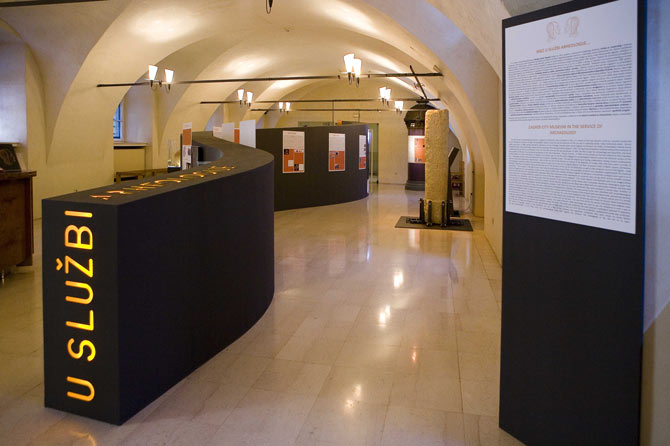
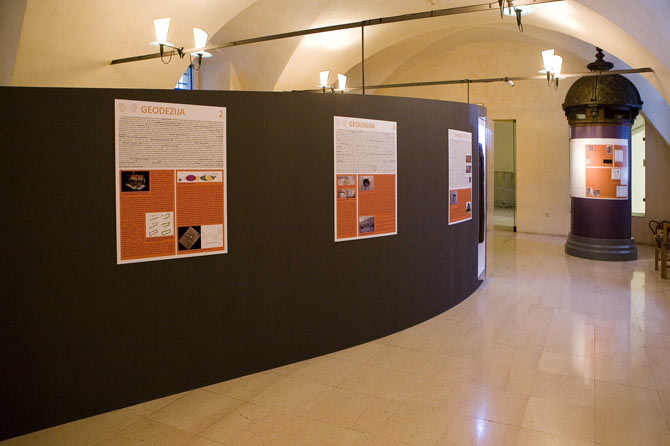
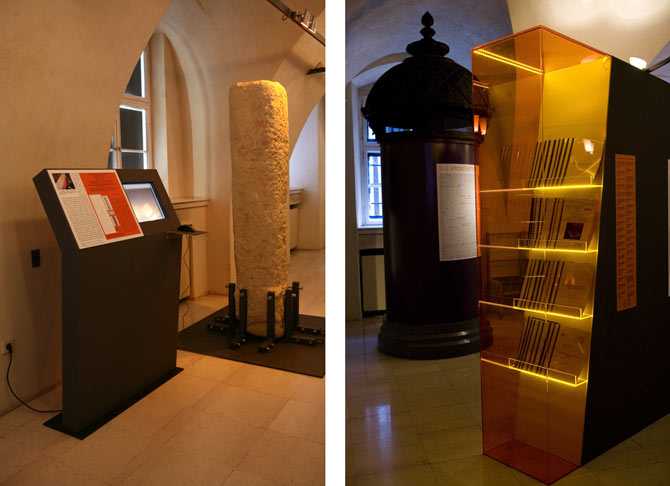
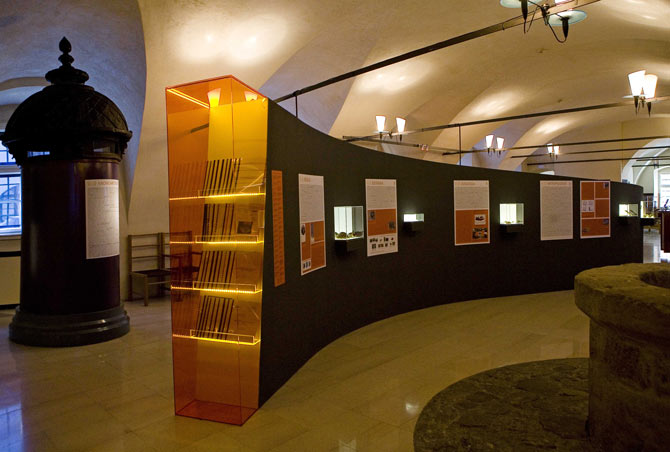

photo Miljenko Gregl, ZCM
 Exhibition catalogue
Exhibition catalogue
Bugar, Aleksandra; Boris Mašić. In the service of archaeology.
Zagreb : Zagreb City Museum, 2013.

